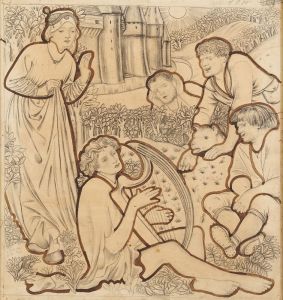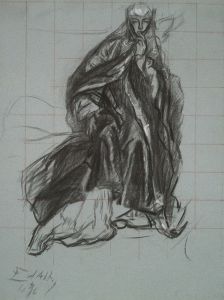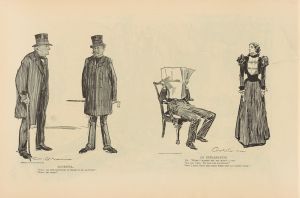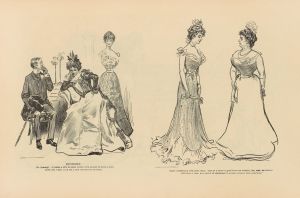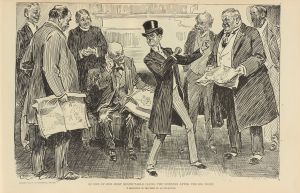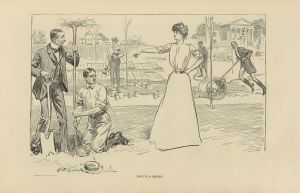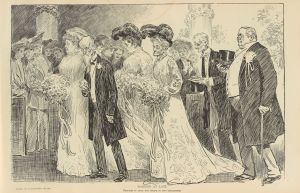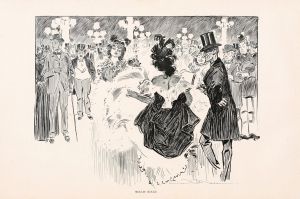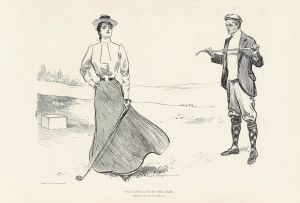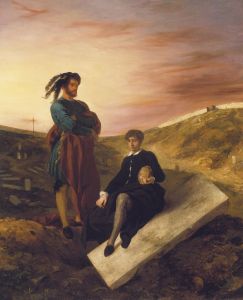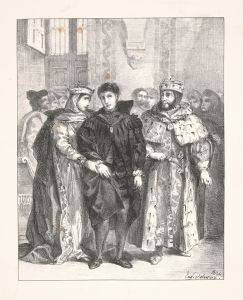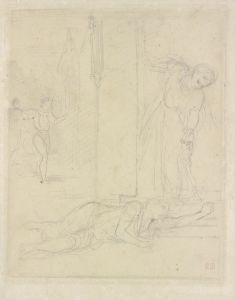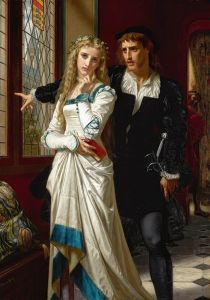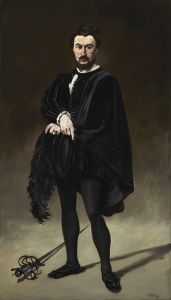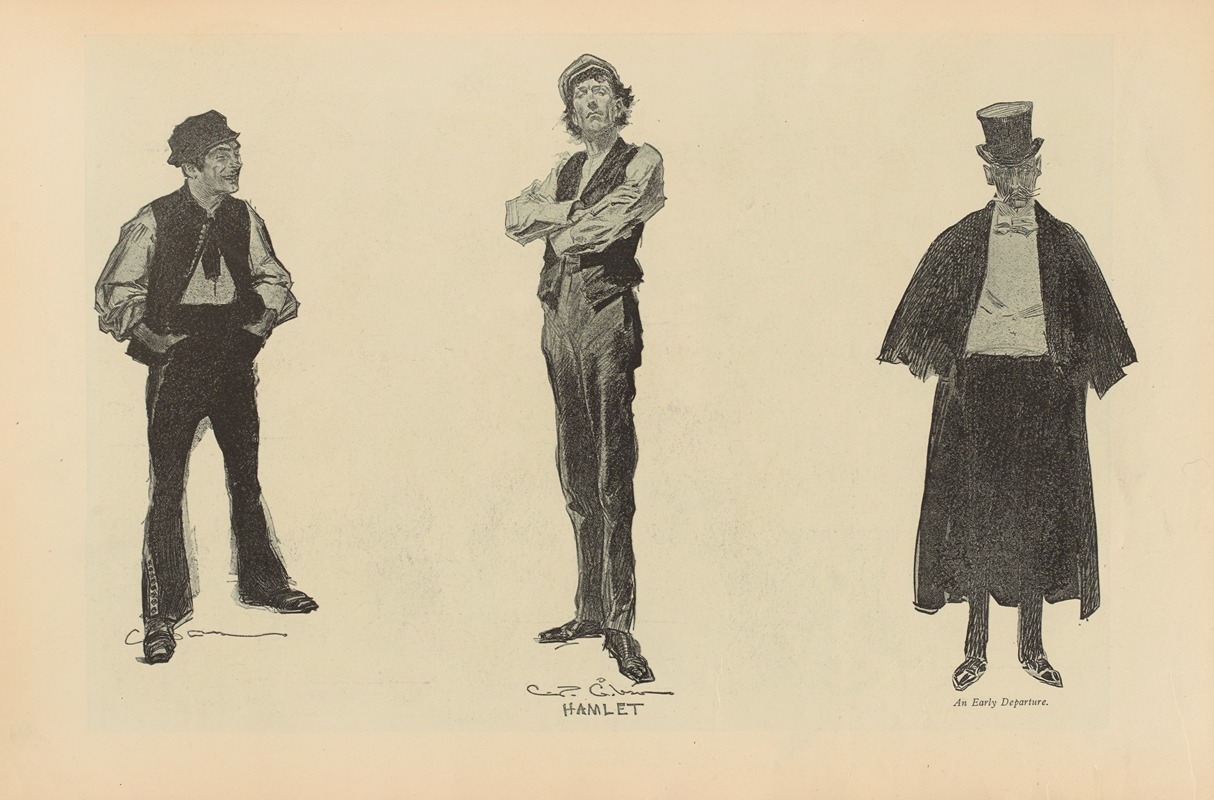
Hamlet
A hand-painted replica of Charles Dana Gibson’s masterpiece Hamlet, meticulously crafted by professional artists to capture the true essence of the original. Each piece is created with museum-quality canvas and rare mineral pigments, carefully painted by experienced artists with delicate brushstrokes and rich, layered colors to perfectly recreate the texture of the original artwork. Unlike machine-printed reproductions, this hand-painted version brings the painting to life, infused with the artist’s emotions and skill in every stroke. Whether for personal collection or home decoration, it instantly elevates the artistic atmosphere of any space.
Charles Dana Gibson, an American illustrator best known for creating the iconic "Gibson Girl," produced a drawing titled Hamlet. This artwork is a pen-and-ink illustration that reflects Gibson's characteristic style, which often combined sharp detail with a sense of humor or social commentary. Hamlet is believed to be inspired by William Shakespeare's famous tragedy of the same name, though the exact context or purpose of the illustration is not widely documented.
Gibson's Hamlet depicts a scene that humorously reinterprets the Shakespearean character. In the drawing, a man—presumably representing Hamlet—is shown holding a skull, a direct reference to the famous "Alas, poor Yorick!" soliloquy from Act V, Scene I of the play. However, Gibson's version introduces a comedic twist, as the man appears to be in a modernized or exaggerated setting, surrounded by onlookers who seem amused or skeptical. This blend of classical literature with contemporary satire was a hallmark of Gibson's work, as he often used his illustrations to comment on societal norms and human behavior.
The exact date of the creation of Hamlet is unclear, but it likely falls within Gibson's most active period as an illustrator, which spanned the late 19th and early 20th centuries. During this time, Gibson's illustrations were widely published in magazines such as Life and Collier's Weekly, where his work reached a broad audience and helped define American visual culture of the era.
As with much of Gibson's art, Hamlet showcases his technical mastery of pen-and-ink drawing. The intricate linework and attention to detail highlight his ability to convey texture, expression, and mood with precision. While the illustration is rooted in humor, it also demonstrates Gibson's deep understanding of human anatomy and facial expressions, which were central to his success as an artist.
Beyond its artistic qualities, Hamlet serves as an example of how Gibson and his contemporaries reinterpreted classical themes for a modern audience. By blending Shakespearean drama with a lighthearted, satirical approach, Gibson made the themes of Hamlet accessible and relevant to his readers, showcasing his ability to bridge the gap between high culture and popular entertainment.
Further details about the specific publication or reception of Hamlet are not readily available, and it is unclear whether the illustration was part of a larger series or a standalone piece. Nonetheless, it remains a testament to Gibson's skill as an illustrator and his ability to infuse classical references with a distinctly modern sensibility.





